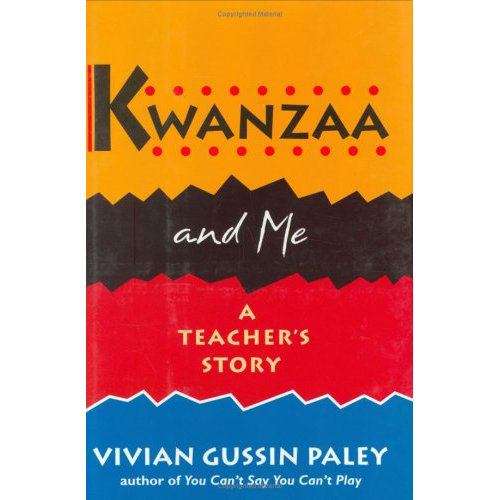Kwanzaa and Me: A Teacher's Story
By:
Sign Up Now!
Already a Member? Log In
You must be logged into Bookshare to access this title.
Learn about membership options,
or view our freely available titles.
- Synopsis
- ALL these white schools I've been sent to are racist," Sonya says. "I'd have done better in a black school. I was an outsider here." These are hard words for Vivian Paley, whose own kindergarten was one of Sonya's schools, the integrated classroom so lovingly and hopefully depicted by Paley in White Teacher. Confronted with the grown-up Sonya, now on her way to a black college, and with a chorus of voices questioning the fairness and effectiveness of integrated education, Paley sets out to discover the truth about the multicultural classroom from those who participate in it. This is an odyssey undertaken on the wings of conversation and storytelling in which every voice adds new meaning to the idea of belonging, really belonging, to a school culture. Here are black teachers and minority parents, immigrant families, a Native American educator, and the children themselves, whose stories mingle with the author's to create a candid picture of the successes and failures of the integrated classroom. As Paley travels the country listening to these stories, we see what lies behind recent moves toward self-segregation: an ongoing frustration with racism as well as an abiding need for a nurturing community. And yet, among these diverse voices, we hear again and again the shared dream of a classroom where no family heritage is obscured and every child's story enriches the life of the schoolhouse. "It's all about dialogue, isn't it?" asks Lorraine, a black third-grade teacher whose story becomes a central motif. And indeed, it is the dialogue that prevails in this warmly provocative and deeply engaging book, as parents and teachers learn how they must talk to each other, and to their children, if every child is to secure a sense of self in the schoolroom, no matter what the predominant ethnic background. Vivian Paley offers these discoveries to readers as a starting point for their own journeys toward community and kinship in today's schools and tomorrow's culture.
- Copyright:
- 1995
Book Details
- Book Quality:
- Excellent
- Book Size:
- 140 Pages
- ISBN-13:
- 9780674505858
- Publisher:
- N/A
- Date of Addition:
- 08/04/08
- Copyrighted By:
- The President and Fellows of Harvard College
- Adult content:
- No
- Language:
- English
- Has Image Descriptions:
- No
- Categories:
- Nonfiction, Biographies and Memoirs, Parenting and Family, Education, Social Studies
- Submitted By:
- Jamie Yates
- Proofread By:
- Allison Hilliker
- Usage Restrictions:
- This is a copyrighted book.
Reviews
5 out of 5
By N/A on Sep 27, 2010
This book really made me think and rethink my perceptions of equality, integration, difference, minority, discrimination, education, and more. In this nonfiction story, an elementary school teacher who has a mix of children from different racial backgrounds in her class wants to create a learning space where everyone feels comfortable and accepted. Realizing that this could be difficult to do, she goes searching for answers. During her journey toward a more integrated classroom, the author doesn’t give us definitive judgments and assessments. She instead relays her experiences and describes her thoughts and feelings on each challenge she encounters. She shows the various sides of every issue and gives us questions to ponder. Her story brought up items I had never thought of before. It reminded me that the issue of equality is a very complex one and that there are no easy solutions that will work for everyone. As someone who is blind, I’ve experienced a combination of acceptance, discrimination, and inequality in my life. So this book brought up points that were both new and old for me. The author doesn’t specifically talk about ability differences in her classroom, only racial diversity, but so many of the race and culture-related issues she discusses can apply in the case of children with disabilities. For example, one of the major discussions in this book centers around whether or not African American children would be happier and feel more accepted in all-black schools. Similarly, among blind and low vision individuals I’ve heard an ongoing debate about whether or not blind children are better off in blind schools. So I think there are interesting parallels here between the questions this teacher asks about racial integration and those others ask about the inclusion of students with disabilities in general education.
Other Books
- by Vivian Gussin Paley
- in Nonfiction
- in Biographies and Memoirs
- in Parenting and Family
- in Education
- in Social Studies
